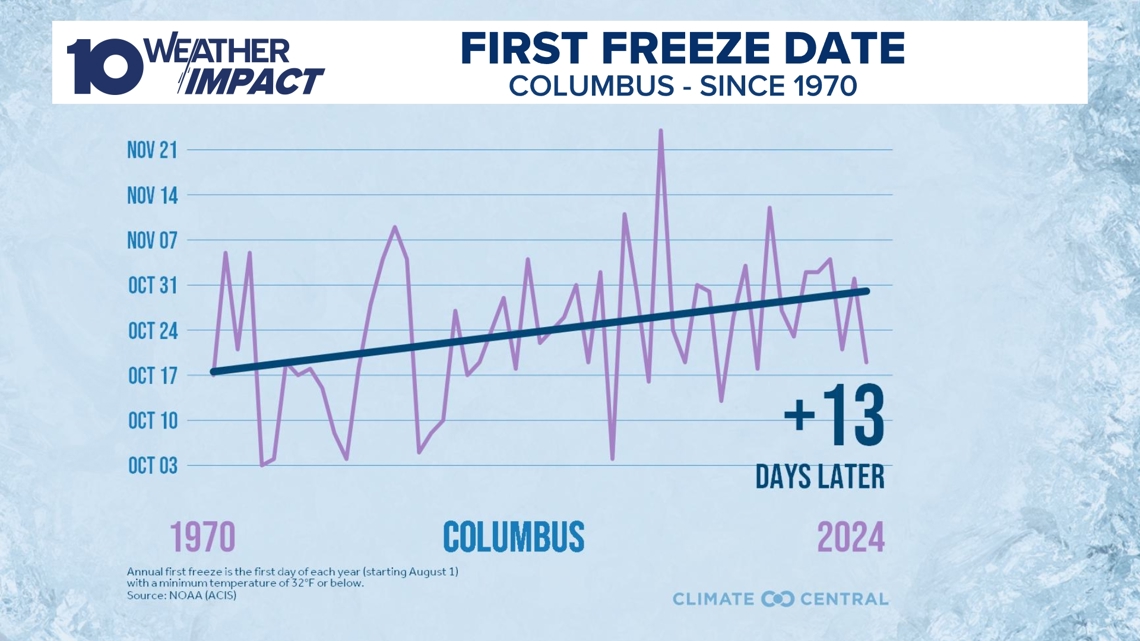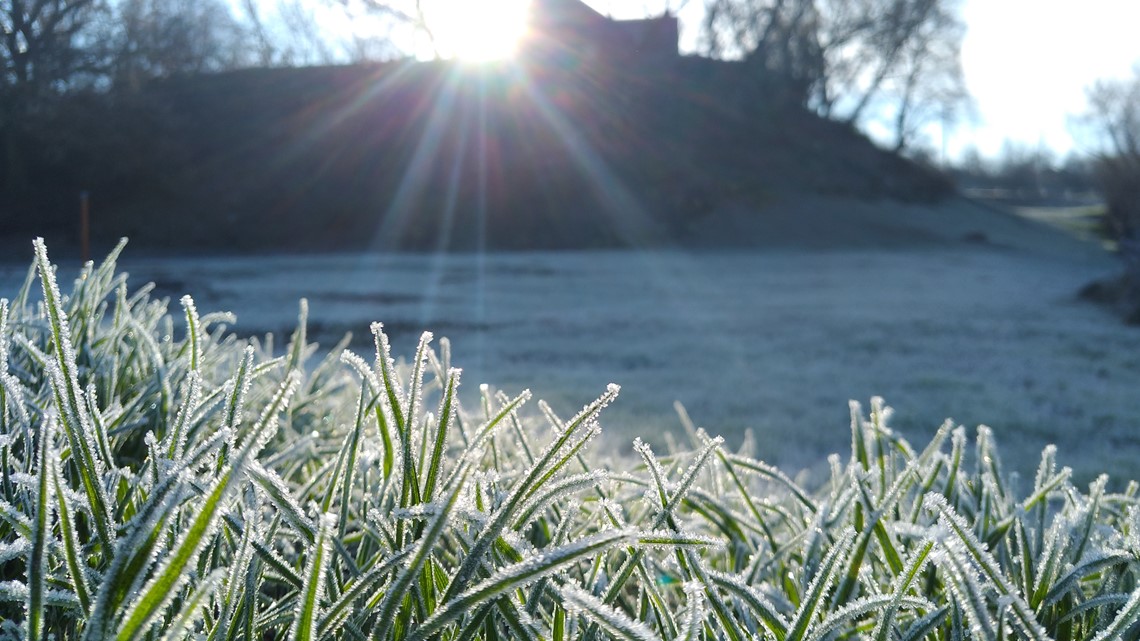Since the 1970s, the date of our first fall freeze has continued to get later. Meteorologist Michael Behrens breaks down the latest data!
COLUMBUS, Ohio — We had a potential for frost across much of Ohio early on Friday, but thankfully for those with plants still alive and kicking, things didn’t get cold enough for the ice to form in most locations.
While this is a good thing for the gardens, it’s also apart of a continuing trend that sees our temperatures staying warmer for longer each fall, pushing that first freeze later and later each year. Our average first freeze is Oct. 23, according to climate records, so we aren’t past normal yet, but what is considered normal keeps on pushing later into the year as time goes on.
Since the 1970s, the first freeze in Columbus has moved back a whopping 13 days on average compared to where it used to be.


It’s not just central Ohio seeing this trend. In fact, much of the country is now experiencing freezing temperatures later in the year than they used to. Of the 179 cities monitored by Climate Central, 88% are seeing their first freeze come later in the year, with the average change since the 1970s being 12 days later into the year.
This map shows the first freeze date range across the country, with Columbus and most of Ohio in the Oct. 16-Oct. 31 range. Worth nothing, the line for cities where that first freeze happens Nov. 1-Nov. 15 is down in Tennessee and North Carolina, with a few that are creeping north into Kentucky and Virginia.
If trends continue, it won’t be long before some of these later freeze dates start to push into Indiana and Ohio as well.


Some may welcome this increase in warmer weather deep into the fall, but it’s worth noting it does come with some drawbacks.
First, the longer we push off that first freeze, the longer we extend our allergy season and our insect season. We also extend the portion of the year requiring air conditioning, as late season heat waves become more normal, not unlike the summer-like fall we have seen for most of the early season.
Warmer and potentially drier falls can also increase fire danger, especially as we head into the harvest season. Not to mention that these extensions to our growing season can sometimes delay usual agricultural harvests as well.
Regardless of the impacts, the warming pattern is here, and that means central Ohio, and really all of the U.S., will need to adapt to this new normal unless climate trends can be changed in the future.
— Meteorologist Michael Behrens
Follow me on social media! Facebook Meteorologist Michael Behrens, X/Twitter @MikeBehrensWX, and Instagram/Threads @MikeBehrensWX.
Email me at: MBehrens@10tv.com
